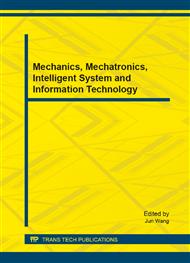p.667
p.673
p.680
p.686
p.695
p.699
p.703
p.707
p.712
Task Scheduling of Cloud Computing in Weapon Network System
Abstract:
In recent years, the rapid development of cloud computing brings significant innovation in the whole IT industry. For the local tasks scheduling on each computational node of the top model of weapon network, an open task scheduling framework was introduced a task accept control scheme based on the tasks based on load balancing, quality of service (QoS) and an improved constant bandwidth server algorithm was presented. The result of simulation shows that the scheduling policies can improve the schedule speed when the number of tasks increases and can meet the demand better for the real time requirementsof the tactical training evaluation system for complexity and Large-scale.
Info:
Periodical:
Pages:
695-698
Citation:
Online since:
August 2014
Authors:
Keywords:
Price:
Сopyright:
© 2014 Trans Tech Publications Ltd. All Rights Reserved
Share:
Citation:


